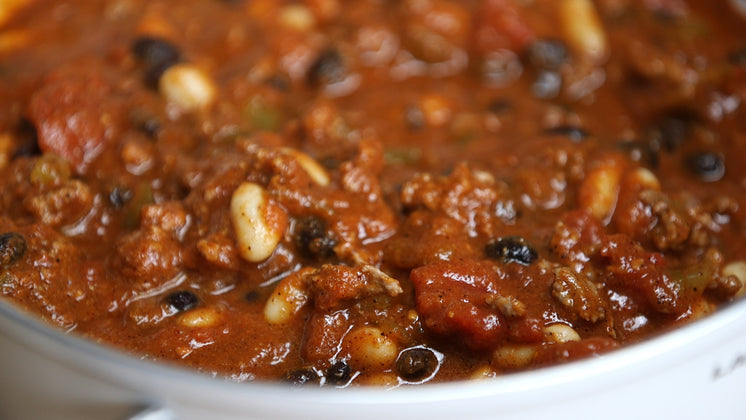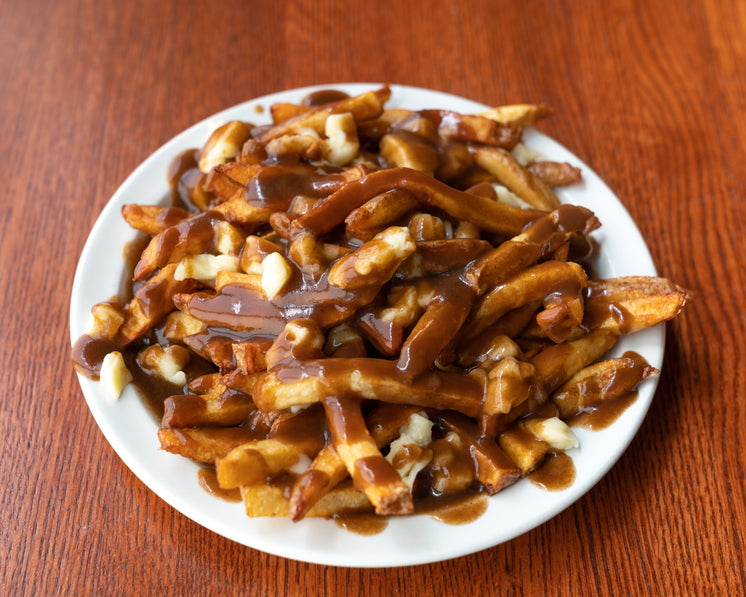Culinary Techniques For The Perfect Turkey Gravy
Culinary Techniques For The Perfect Turkey Gravy
Make-Ahead Roux
Making a roux forward of time is a good way to save effort and time when you’re making gravy.
To make a roux, simply whisk collectively equal components flour and butter in a saucepan over medium heat.
Cook the roux, stirring continually, until it reaches the specified color. The shade of the roux will decide the flavor of the gravy.
A gentle roux will produce a light-colored gravy with turkey drippings, whereas a darkish roux will produce a dark-colored gravy.
Once the roux has reached the specified colour, take away it from the heat and let it cool completely.
The roux can then be stored in an airtight container in the fridge for as a lot as 2 weeks.
When you’re ready to make gravy, simply whisk the roux into the recent liquid till it’s easy and thickened.
You can then add some other desired ingredients, such as herbs, spices, or greens.
Make-Ahead Roux
To make a roux forward of time, whisk together equal parts by weight of all-purpose flour and unsalted butter in a small saucepan. Cook over medium warmth, stirring constantly, till the roux reaches the desired shade (see below). Transfer the roux to an hermetic container and let cool fully. The roux could be stored in the fridge for up to 2 weeks or in the freezer for up to 2 months.
Storage
Once the gravy has been made, it may be saved in the fridge for as a lot as three days or within the freezer for up to 2 months. To reheat the gravy, thaw it overnight within the refrigerator or microwave it on low energy until warmed via.
Reheating
To reheat the gravy, place it in a saucepan over medium heat and produce it to a simmer. Stir constantly till the gravy is warmed through. If the gravy is too thick, add somewhat little bit of water or broth to skinny it out. If the gravy is too skinny, add somewhat little bit of cornstarch or flour to thicken it.
Drippings and Broth
Drippings: The flavorful juices that accumulate within the roasting pan throughout cooking. Collect these juices by spooning them out from the pan.
Broth: A flavorful liquid made by simmering bones, vegetables, and herbs in water. Use turkey or rooster broth for turkey gravy.
Deglazing the pan: Cooking the remaining bits in the roasting pan with a liquid (such as broth or wine) to dissolve and scrape up any flavorful residue.
Drippings and Broth:
Drippings are the flavorful juices and browned bits that accumulate on the bottom of the roasting pan, while broth is the liquid base for sauces and soups. Adding stock to gravy supplies extra taste and depth. Here’s the method to utilize these elements:
1. Drippings:
– Collect the drippings from the roasting pan after the turkey is eliminated and permit them to chill slightly.
– Skim off any extra fat. The fat can be reserved for different culinary uses.
2. Broth:
– Prepare a flavorful broth utilizing turkey bones, vegetables, and herbs.
– Strain the broth to remove any solids.
3. Adding Stock and Drippings to Gravy:
– Start with a small quantity of drippings and whisk in gradually to keep away from lumps.
– For a richer taste, add stock to skinny out the drippings and create a more flavorful gravy.
– Taste and adjust the seasoning as needed, including more stock or seasonings to desired consistency and flavor.
Drippings are the flavorful juices that accumulate in the roasting pan in the course of the cooking process. They are a byproduct of the natural juices released by the turkey because it roasts, in addition to the fats that melts from the pores and skin and fat cap.
Broth is a flavorful liquid made by simmering meat, poultry, fish, or greens in water. It is a versatile ingredient that can be used in soups, stews, sauces, and gravies.
Both drippings and broth are important elements of a flavorful turkey gravy. Drippings provide the wealthy, meaty flavor, while broth adds depth and complexity. By combining the 2, you can create a gravy that is both delicious and satisfying.
To make the best use of drippings and broth, it may be very important observe a number of easy steps:
- Do not pour off the drippings before roasting the turkey. The drippings will assist to maintain the turkey moist and flavorful during the cooking course of.
- After the turkey is roasted, remove it from the pan and let it rest on a wire rack. This will permit the drippings to settle to the bottom of the pan.
- Pour the drippings into a saucepan and skim off any excess fats. You also can strain the drippings by way of a fine-mesh sieve to remove any solids.
- Add the broth to the saucepan and convey to a simmer. Cook for 5-10 minutes, or until the gravy has thickened to the desired consistency.
You can also add other components to your gravy to reinforce its taste, similar to herbs, spices, wine, or cream. Experiment with totally different mixtures till you discover a flavor that you love.
Turkey gravy is a versatile ingredient that can be utilized in a selection of dishes. It is a scrumptious topping for roasted turkey, mashed potatoes, stuffing, and other Thanksgiving favorites.
Thickening the Gravy
Thickening the Gravy – Whisking in roux
Making a roux is a traditional culinary technique used to thicken sauces, soups, and gravies. It involves cooking equal elements fats and flour collectively to create a easy paste.
To thicken turkey gravy with a roux:
- In a small saucepan, melt an equal amount of butter and all-purpose flour over medium warmth.
- Whisk constantly until the mixture turns a light golden brown, about 2-3 minutes.
- Gradually whisk within the turkey gravy until it reaches your required consistency.
- Simmer for 5-10 minutes to take away the raw flour style and allow the flavors to mix.
Tips:
- For a thicker gravy, use more roux.
- For a lighter gravy, use much less roux.
- Don’t overcook the roux, as it will turn out to be bitter.
- Whisk the roux into the gravy gradually to keep away from lumps.
As the star of the Thanksgiving table, turkey gravy demands the utmost care and attention to detail. One essential side of reaching the proper gravy lies in thickening it to the desired consistency.
Among the varied thickening brokers available, the slurry methodology reigns supreme for its versatility, ease of use, and skill to deliver a clean, lump-free gravy.
A slurry is a combination of equal parts chilly liquid and cornstarch. When whisked collectively, it forms a paste-like substance that serves as the thickening agent.
To thicken your turkey gravy with a slurry, comply with these easy steps:
1. In a small bowl, whisk together equal parts chilly water and cornstarch.
2. Gradually whisk the slurry into the simmering gravy, stirring constantly.
3. Bring the gravy again to a simmer and cook dinner, stirring occasionally, till it reaches the specified thickness.
4. If the gravy becomes too thick, merely whisk in additional chilly liquid as needed.
The beauty of using a slurry lies in its gradual thickening impact. This lets you management the consistency with precision, ensuring that your gravy seems perfectly clean and flavorful.
Seasoning and Finishing
– Seasoning often refers to adding flavor to food throughout cooking, while finishing refers to including taste just before serving.
– Salt is a mineral that enhances the pure flavors of food.
– Pepper is a spice that adds a sharp, piquant flavor to meals.
Seasoning and Finishing
When making turkey gravy, it could be very important season it properly. This could be done with a selection of herbs and spices, such as thyme, sage, rosemary, black pepper, and allspice. You also can add a little bit of garlic powder or onion powder for extra taste.
Once the gravy has been seasoned, you will need to end it off with a little bit of butter or cream. This will help to make the gravy clean and creamy. You can even add a splash of white wine or brandy for a bit of extra taste.
Herbs and Spices
The following are a variety of the commonest herbs and spices used to season turkey gravy:
- Thyme: Thyme is a basic herb that adds a warm, earthy flavor to gravy.
- Sage: Sage is one other popular herb that adds a slightly peppery flavor to gravy.
- Rosemary: Rosemary is a fragrant herb that provides a woodsy taste to gravy.
- Black pepper: Black pepper is a versatile spice that provides a bit of heat to gravy.
- Allspice: Allspice is a warm, sweet spice that provides a bit of complexity to gravy.
- Garlic powder: Garlic powder is a handy way to add a bit of garlic taste to gravy.
- Onion powder: Onion powder is a convenient approach to add a bit of onion flavor to gravy.
Seasoning and finishing are the ultimate steps in making ready turkey gravy, they usually’re important for making a flavorful and balanced dish.
Seasoning
Taste your gravy and add salt and pepper to style. You also can add other spices, similar to thyme, sage, or rosemary, to reinforce the flavor. Be careful not to overseason, as you probably can always add more seasoning later nevertheless it’s troublesome to remove it.
Finishing
Once the gravy is seasoned to your liking, you can end it by adding a knob of butter or a splash of cream. This will help to thicken the gravy and give it a richer flavor.

Straining
If you want your gravy to be smooth and lump-free, you’ll find a way to strain it via a fine-mesh sieve. This will remove any bits of meat or greens which will have gotten into the gravy.


Recent Posts
- Choosing The Right Molds For Chocolate Mousse Cake
- How To Make Pull-Apart Pizza Bread On A Grill
- Experimenting With Chocolate Mousse Cake In Molds
- Creating Low-Calorie Pull-Apart Pizza Bread
- Turkey Gravy For Special Diets: Options And Ideas
- Choosing The Right Cocoa For Chocolate Mousse Cake
- Gourmet Toppings For Chocolate Mousse Cake
- Pull-Apart Pizza Bread For Picnics And Outdoor Events
- Chocolate Mousse Cake With Mascarpone Cream
- Pull-Apart Pizza Bread As A Holiday Gift Idea
- Making Chocolate Mousse Cake With Gelatin
- BBQ Pulled Chicken Sloppy Joe Recipe
- Perfecting The Chocolate Mousse Layer In Cakes
- Elevating Pull-Apart Pizza Bread For Special Occasions
- Potato Wedges Vs Mashed Potatoes: A Taste Test
- Low-Sugar Chocolate Mousse Cake Options